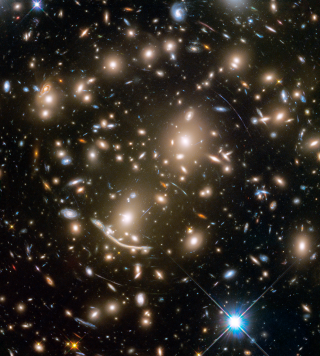Bibcode
Ascaso, B.; Moles, M.; Aguerri, J. A. L.; Sánchez-Janssen, R.; Varela, J.
Referencia bibliográfica
Astronomy and Astrophysics, Volume 487, Issue 2, 2008, pp.453-460
Fecha de publicación:
8
2008
Revista
Número de citas
15
Número de citas referidas
14
Descripción
Aims: Using data from five clusters of galaxies within the redshift
range 0.15 ≤ z ≤ 0.25, imaged with the Nordic Optical Telescope
(NOT) in the central ≈1 Mpc2 in very good seeing
conditions, we have performed an exhaustive inspection of their bright
galaxy population. That range of redshift, where only a small amount of
data with the required resolution and quality is available, is
particularly important for the understanding of the formation and
evolution of clusters of galaxies. Methods: We have inspected
the color-magnitude relation (CMR) for those clusters and measured the
blue fraction of galaxies in their cores to check for evidence of
evolution as found in other works. Visual classification of the galaxy
morphology has been performed and the morphology-radius relation
examined. Results: We have not found signs of evolution either in
the slope of the CMR or in the blue fraction of galaxies. A diversity of
situations regarding those parameters and in the morphological mixing
has been noticed, with two out of five clusters containing a dominant
late-type core population. The cluster A1878 stands out as some of its
properties differ from those of the other clusters in the sample. Conclusions: No clear signs of evolution appear in our analysis. The
data support the view that the morphology and the stellar content of the
galaxies in our clusters already have been settled at z ˜ 0.2.
Only the fraction of interacting galaxies in the clusters appear to be
larger than in clusters like Coma, although the number of clusters in
the sample is too small to give a definitive conclusion.
Appendix A is only available in electronic form at http://www.aanda.org
Proyectos relacionados

Evolución de Galaxias en Cúmulos
Las estructuras en el Universo, a todas las escalas de masa, se han formado de una forma jerárquica y principalmente producidas por fusiones de galaxias. Sin embargo, esta formación jerárquica de las galaxias está modulada por el entorno en el cual se crean y evolucionan. Mientras que las galaxias de campo presentan una evolución pasiva, los
Jairo
Méndez Abreu